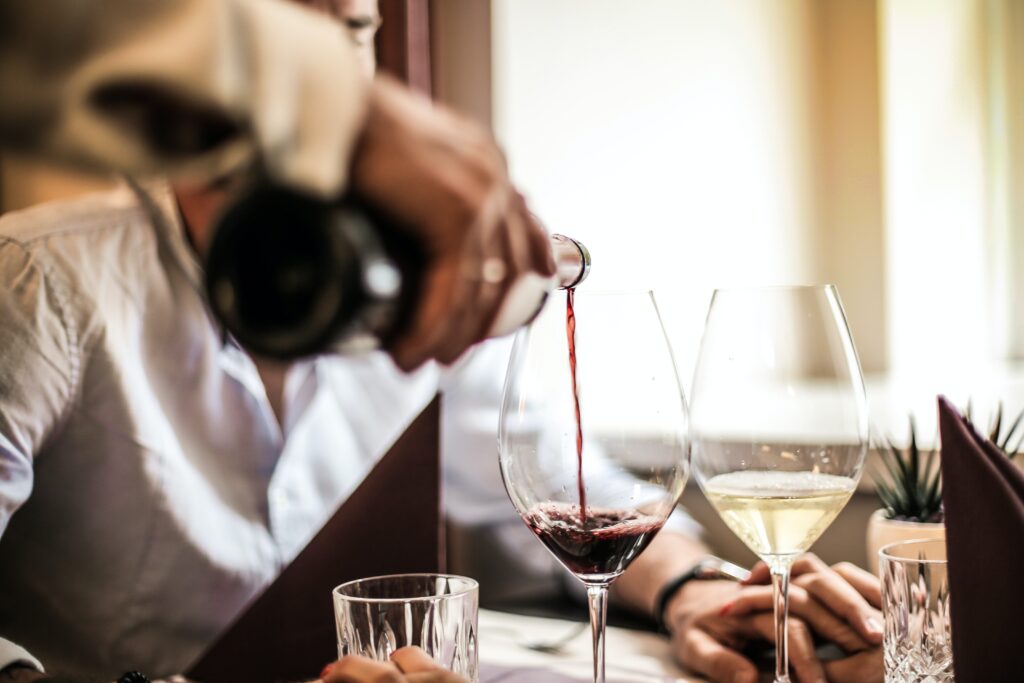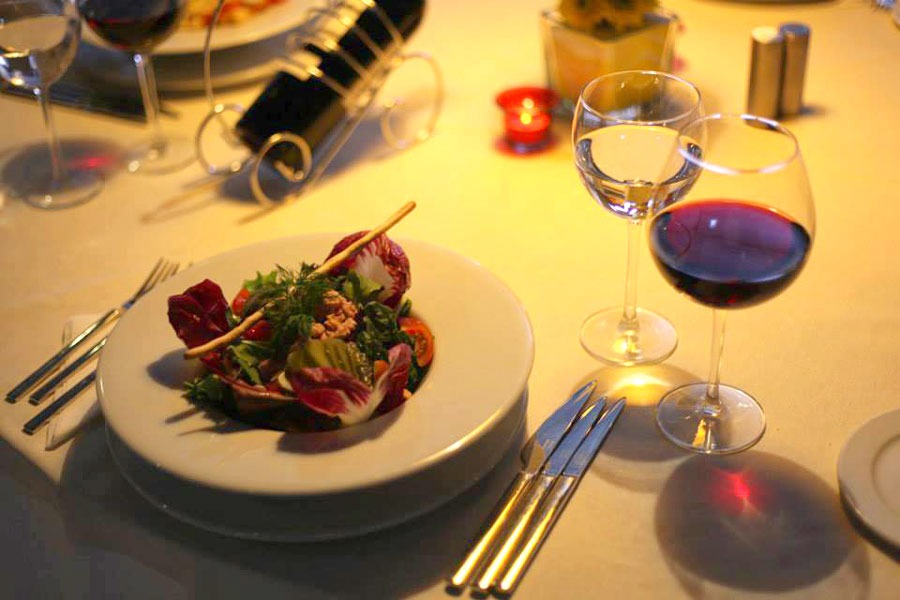The harmony between food and wine, or rather the duo of basic taste interactions, can involve different sensitivities to individuals’ taste and aroma components. The level of bitterness may affect one person more than another. There may be those who enjoy strong reactions as well as those who do not.
It is necessary not to overlook the diversity in preferences. In addition to individual sensitivities, the diversity in preferences can be seen as perfect on one hand while ordinary on another. For this reason, when it comes to the harmony between wine and food, it is necessary to take into account individual preferences and sensitivities in duo of flavors.
The basic principle for selecting wine to accompany a meal is to pair similar or contrasting food and wine. In duo of flavors, the weight of the meal, richness, aroma intensity in the food, and density in the wine can be paired. Wines with high acidity can be paired with dishes with tomato sauce or dishes with added lemon acidity. Sweet wines can be paired with sweet dishes, and high-tannin wines can be paired with red meats.
Fundamentals of Wine and Food Pairing
With each bite of food taken into your mouth, your taste receptors adapt to that bite, and perceptions of salt, sugar, acidity, etc., levels can change with the next bite or sip. After brushing your teeth, you may not be able to find the real taste of orange juice. In addition, intense creamy dishes or foods like chocolate can weaken the sense of taste.
When eating, there are two components in wine that make it taste bitter, acidic, slightly sweet, slightly fruity, and more dry. To capture the duo of flavors between wine and food, individuals need to focus on different taste and aroma components. This point should be taken into account in the fundamentals of wine and food pairing.
Harmony between White Wine and Seafood
Seafood and wine are among the most versatile flavors. The versatility of this duo stands out in terms of their connection and compatibility in flavors. When you pair your favorite seafood with a wine, you can encounter an irresistible flavor. Where does the magnificent harmony between white wine and seafood come to the forefront?
When it comes to seafood, white wine immediately comes to mind. However, this may not be the only option for you. You can also have an option with full-bodied red wine. Therefore, there are quite a few options in sparkling wines.
Each wine has a different taste and can create wonderful combinations in meals. The preferred seafood in this case, factors such as the type of seafood and cooking techniques can be effective in the harmony of the meal.
Choosing seafood as a duo of flavors in wine and food pairing can enhance your dining experience. The characteristics of the preferred seafood are important in determining the best wine to enrich your experience.
Ideally, in the harmony between wine and fish, they should not suppress each other’s flavors. With a well-chosen pairing, both the seafood and the wine can enhance each other’s flavors. You can pair a variety of flavored wines with your chosen seafood.
Contrasting choices can result in excellent flavors. You can pair a light white wine with spicy seafood. This way, the meal is balanced. The sweetness level of the wine can be reduced in salty seafood. This way, fruity flavors emerge. For a perfect harmony with salty seafood, choices such as Chardonnay or Pinot Grigio can be preferred.
White wine generally pairs well with seafood. Fish, shrimp, oysters, and other fresh seafood can create a delicious duo with a light and refreshing Chardonnay or Sauvignon Blanc.
Red Wine and the Sweet Dance of Meat
Wine, which completes and enriches the dining experience, can create perfect flavors when considering aroma profiles. In wine pairings, the tastes and characteristic features of the wine play an impressive role.
These features can be considered for the art of achieving a perfect harmony. To achieve a perfect harmony between red wine and meat, you can create a strong harmony with red meat such as beef or lamb using red wine. Red wines such as Cabernet Sauvignon or Syrah can be preferred to complement the intensity and aroma of the meat.
Harmony between Dessert and Champagne
For desserts, you can enjoy a top-quality dessert wine called “noble wine.” You can serve champagne with chocolate soufflé with its tannic structure suitable for aging for many years.
While serving traditional Turkish desserts with intense syrupy baklava can be challenging with dessert wines, you can achieve a good harmony by serving pear dessert, crème caramel, quince dessert, or even pumpkin dessert with white wine. Which wines should be served with desserts for harmony between wine and food? Desserts should be served with wines that have a sweetness level proportionate to the dessert.
If sweet red wine is consumed with dessert, the wine may feel acidic, bitter, and high in alcohol. When you pair foamy wine with buttery baklava, you can achieve a perfect harmony. Sweet wine can be paired for a delicious harmony by balancing sweetness and acidity. To achieve a wonderful harmony in desserts, sweet wines such as Porto, Sauternes, or Moscato can be preferred.
Wine Tasting and Serving Tips
In wine consumption, the ambiance of the conversation takes precedence over the quality of the wine. Wine tasting can take place in any setting. The tasting of wine emerges as more of a technical activity rather than a matter of taste preference.
Before conducting a wine tasting, the person should prepare themselves for wine tasting. It is essential to consider even the finest details for a productive wine tasting. The importance of light reflections in visual assessment should be taken into account. To avoid misleading the taster, even the choice of clothing beyond the wine colors is important.
For a quality wine tasting, it is important that the person tasting the wine does not consume any foods that leave a lasting smell in the mouth, such as onions, garlic, or menthol, before the tasting. Otherwise, the consumption of such foods would hinder a productive evaluation from the taster’s perspective.
Therefore, it is preferable not to consume such foods before the tasting. In addition, in the tasting room, the taster should avoid deodorant, perfume, or other fragrant products. A taster using such products hinders the ability to make a productive evaluation in wine tasting. It affects the evaluations negatively.
As wine is a beverage that can be consumed at any time, proper timing and the selection of appropriate foods enhance the quality of the evaluation. The most accurate wine tasting should take place before a meal. Evaluation between 11 am and 12 pm or between 6 pm and 7 pm would be productive.
In a wine tasting before a meal, the taster’s stomach will be empty. Without causing any discomfort, a broth without spices or a slice of bread consumed without anything else would slightly fill empty stomachs. Foods that leave a lasting smell or affect taste should be avoided.
See you in the next post,
Anil UZUN


